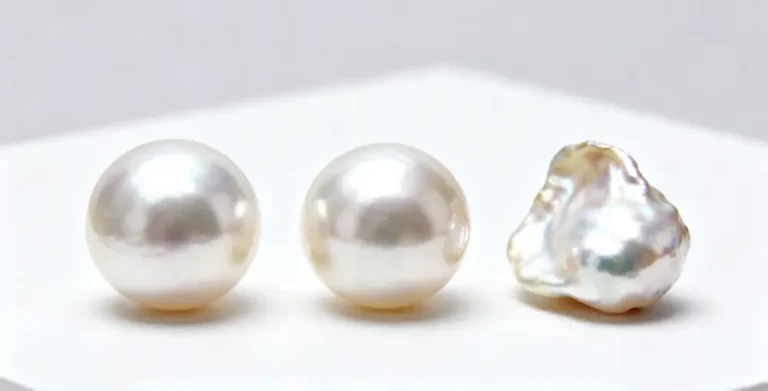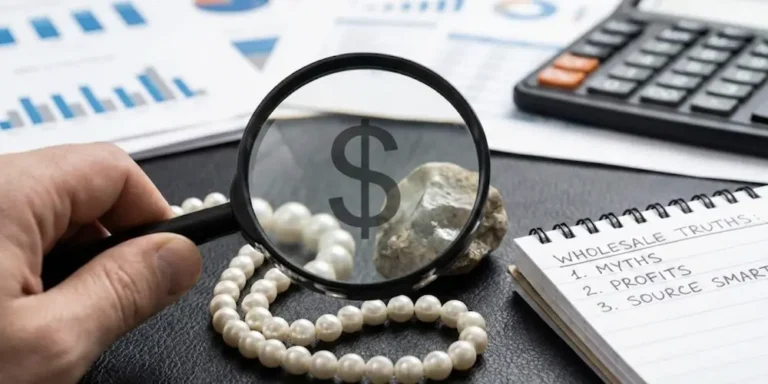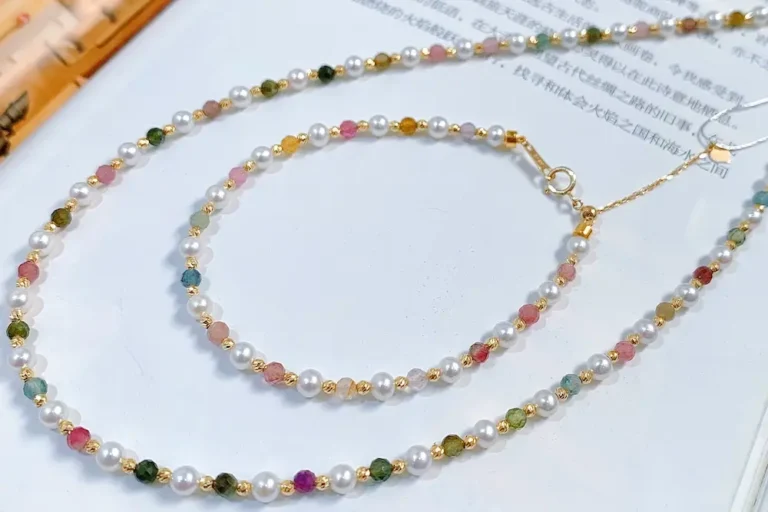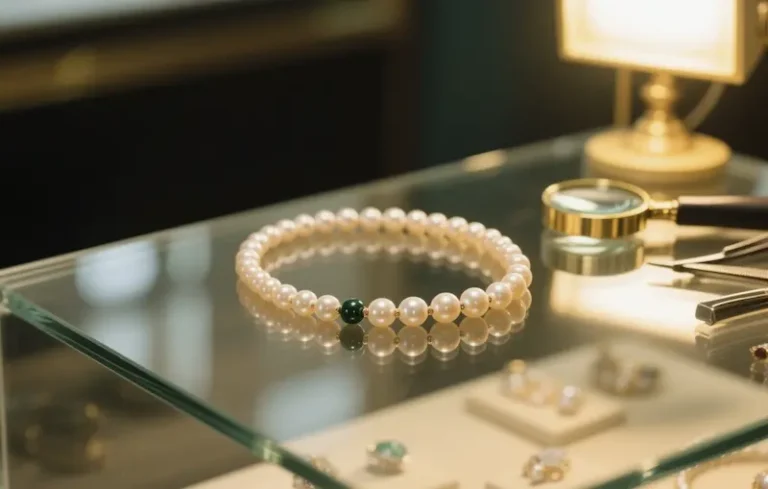Pearls have captivated people for ages thanks to their beauty, shine, and how they’re made. They’re often seen as a sign of elegance and class, making them highly valued in jewelry. But a lot of people wonder exactly how are pearls made.
This article will walk you through the fascinating process of pearl formation, whether it happen on the cultured pearl farm or naturally We’ll look at the requirements for pearl growth and their significance to the jewelry industry. You’ll notice how magically the pearls form once you know how they’re made. Let’s break down exactly “how are pearls made” so you really understand it.
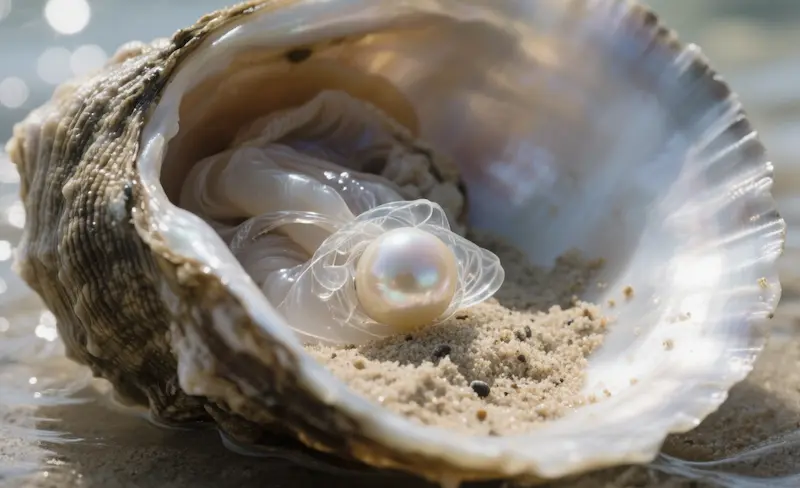
1. Definition and Significance of Pearls
A pearl forms inside a mollusk’s or a pearl oyster‘s soft tissue. It is a hard, rounded object mostly made of calcium carbonate. The mollusk/oyster creates it to protect itself from irritants like parasites or foreign particles. This process shows resilience and natural beauty. In the past, pearls were a sign of wealth and power. You’d see them on royalty a lot. You’d often see them in important works of art and culture.
Pearls are more than just pretty; they have cultural significance in many cultures. People often use them in weddings and other ceremonies to show that they are innocent and pure. And they’ve come back in a big way in the fashion world lately. Designers are using them to make modern jewelry, which shows how classic and timeless they really are. Pearls can be used to make all sorts of jewelry, like pearl necklaces, pearl bracelets, pearl earrings, and pearl pendants.
2. Types of Pearls
Pearls can be categorized into several types, each distinguished by their origin, shape, color, and size. The two primary classifications are natural and cultured pearls.
| Classification | Type | What Makes Them Special |
|---|---|---|
| By Formation | Natural Pearls | Found by pure chance in wild oysters and mussels – incredibly rare finds |
| Cultured Pearls | Grown on pearl farms where farmers give nature a little nudge | |
| By Oyster Type | Akoya | The classic white beauties from Japanese waters |
| South Sea | Big, gorgeous pearls from tropical Australian and Indonesian seas | |
| Tahitian | Dark, mysterious gems from French Polynesian lagoons | |
| Freshwater | Budget-friendly gems from lakes and rivers, mostly from China |
To really understand how pearls are made, you have to consider the incredible biology that goes on inside the creatures that create them. Each pearl reveals the hidden treasures of ocean life and serves as evidence of how beautiful and intricate nature can be.
Additionally, pearls can be round, baroque, or nearly round, among other shapes. They’re not just white, either! They come in pinks, golds, creamy colors, and even black. The color depends on the kind of mollusk/oyster and its habitat. Pearls are fascinating because of their variety, which is also the reason why everyone wants to wear them as jewelry.
3. The Basics of Pearl Formation
What Is a Pearl?
When something bothersome, such as a grain of sand , gets inside a mollusk(oyster), a pearl is created. The mollusk/oyster begins covering the irritant with layers of nacre. As a form of self-defense, the smooth, glossy substance that gives pearls their beauty. This goes on and on until the irritant is completely covered and you have a pearl.
Natural vs. Cultured Pearls
Natural pearls are extremely rare because they form naturally, without our assistance. They are very valuable, and finding one is like winning the lottery. In contrast, people create cultured pearls. The mollusk/oyster produces a pearl after someone carefully injects it with an irritant. Although cultured pearls are more readily available, their quality can still determine their beauty and value.
4. The Process of Pearl Formation
The process of how are pearls made highlights the incredible adaptation of mollusks/oysters to their environment.
Initial Irritation
When something that doesn’t belong enters a mollusk and begins to annoy it, a pearl begins to form. This might be a grain of sand or even a tiny fragment of something. When the mollusk(oyster)’s natural defenses kick in, it starts to nacre the annoying object. This initial step is crucial.
Nucleus Insertion Surgery is typically the method used for modern pearl cultivation, requiring skilled techniques and extreme precision.
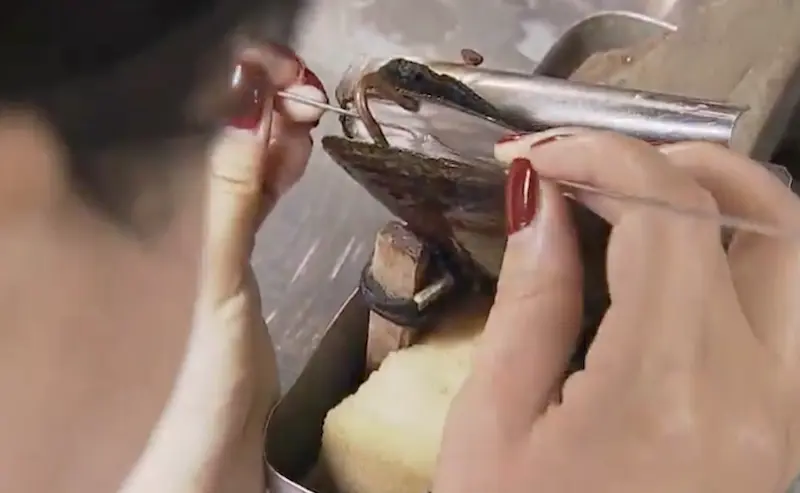
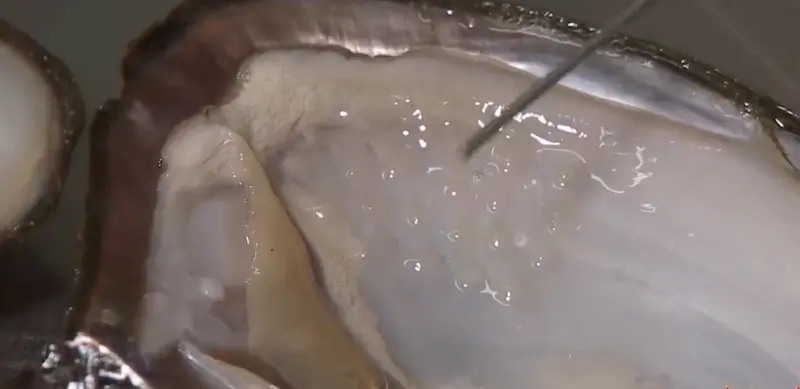
Okay, here’s how cultured pearls are made:
- Getting Ready: They take pearl oysters from where they’re grown and put them in special holders that gently prop their shells open a bit.
- Mantle Magic: A tiny piece of tissue called “mantle tissue” is taken from a healthy oyster (the “donor”). This tissue is what makes the beautiful pearl coating (nacre).
- The Big Insertion: Skilled technicians carefully cut a small slit in the oyster that will receive the pearl (the “recipient”). Then, they slip in a round bead (usually made from mussel shell) and that little piece of mantle tissue together. The mantle tissue will stick to the bead and create a little “pearl sac” that slowly coats the bead with nacre.
- Back to the Water: Once everything’s in place, the oysters are put back in the water to recover.
Nacre Layer Production
Nacre, which is also called mother-of-pearl, is made of two things: aragonite and conchiolin. As the mollusk keeps layering on the nacre, it slowly builds up and forms a pearl. How thick and good these layers are affects how the pearl looks – its shine and shape, for example. This whole thing can take anywhere from half a year to several years, depending on the type of mollusk and the conditions it’s living in.
5. Environmental Factors Influencing Pearl Formation
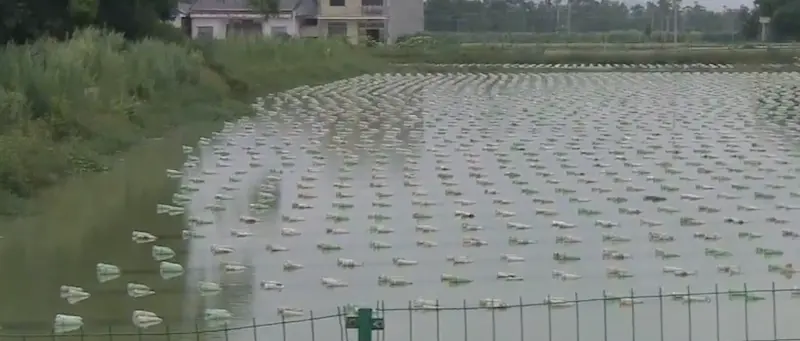
- Water Quality
The culturing process highlights how are pearls made under controlled conditions, ensuring a consistent and beautiful end product.
Pearl formation is influenced by the water quality in which the pearl oyster lives. Clean water that’s full of minerals helps pearl oysters grow strong and healthy, and that leads to really nice, high-quality pearls. If the water’s polluted, it can hurt the pearl oyster. This can lead to it not making good nacre, and that means the pearls won’t be as nice, it could even kill the pearl oyster.
- Temperature and Depth
It’s important to consider how pearls are made when talking about ethical issues. The main idea is to farm pearls in a way that’s good for the environment.
Pearl formation is also influenced by water depth and temperature. Most of the pearl oysters prefer particular temperature ranges. Changes in temperature can stress the oysters out, which affects how well they produce nacre. Additionally, depth influences the availability of nutrients and sunlight, which are crucial for the pearl oyster’s health. Ideal pearl-producing environments often have stable temperatures and depths conducive to optimum pearl oyster growth.
So, to sum it up, the complex procedures used to create pearls showcase both the beauty of nature and human activity.
6. The Role of Cultured Pearls in the Industry
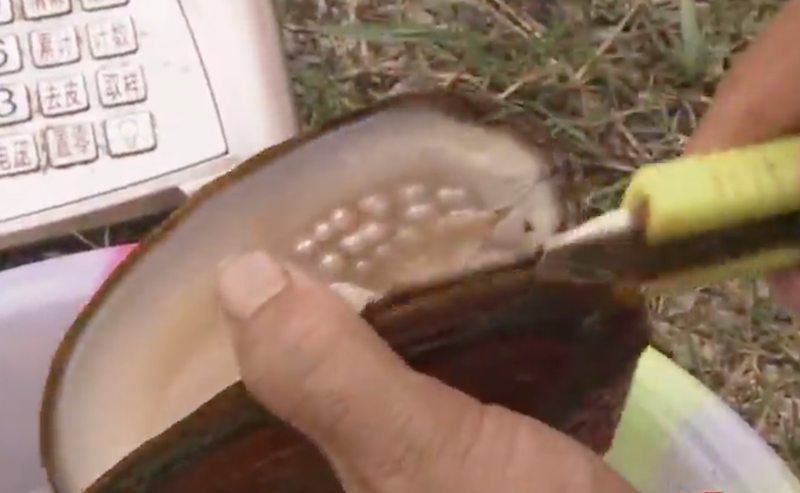
The Culturing Process
As the pearl industry grows, really understanding how pearls are made is super important. It helps us make sure that making pearls is sustainable and done ethically.
Ultimately, understanding the process of pearl formation involves more than just science. It allows one to admire the delicate balancing act between human skill and nature.
To grow pearls, you need to choose the right kind of oyster and take care of them really well so they can efficiently make pearls. Usually, someone uses a piece of tissue from another oyster or carefully inserts a tiny bead—typically made from a shell—into the pearl oyster.
In order to produce a cultured pearl, the pearl oyster is encouraged to cover the bead with layers of nacre. This means we have more control over the size and shape of the pearls.
Ethical Considerations
When learning about “how are pearls made,” people often think about the ethical considerations involved. As the cultured pearl industry has grown, so have conversations about whether it’s being done ethically. Some worries include how the oysters are treated and the impact pearl farming has on the environment. Good pearl farms use sustainable methods to make sure the oysters are well-cared for and that they don’t harm the environment too much. People are also trying to teach consumers about where pearls come from, encouraging them to choose pearls that are sourced in a way that’s both environmentally friendly and kind to the oysters.
The beauty of pearls and the question of “how are pearls made?” still fascinates jewelers and shoppers.
Understanding how pearls are made helps people make smart choices when buying pearl jewelry and appreciate the skill that goes into each piece.
Summary of Pearl Formation
Naturally, as our knowledge of pearls grows, we begin to wonder, “How Are Pearls Made?” That question only serves to increase your curiosity and drive for learning.
When you finally learn how pearls are made, you’ll see that it’s a lovely fusion of what nature does and what people have contributed to.
Pearls are stunning gems that form naturally. They are made by an intriguing process that begins with an irritant inside a mollusk and ends with the mollusk covering it in layers of nacre, which is that gorgeous, iridescent substance. Natural pearls are super rare, but cultured pearls are now a popular choice in jewelry, offering beauty and variety. You can truly appreciate how unique and beautiful these gems are once you know how they are made and what factors influence their quality.
Future of Pearling Practices
As we learn more about our oceans/lakes and how to farm them sustainably, pearl farming is looking like it has a bright future. Making pearl farming better and ensuring we source pearls ethically is super important for the industry to be sustainable. Because pearls are becoming increasingly desirable, we need to protect the environment and look after the mollusks/oysters that make them, so that everyone can enjoy these stunning gems for generations.
Important to note: Xinye Pearl’s solar-powered pearl farm
7. FAQs
Q: What is the difference between natural and cultured pearls?
A: Natural pearls form spontaneously in the ocean without human intervention, while cultured pearls are created through a controlled process where an irritant is intentionally introduced to a mollusk/oyster.
Q: How long does it take for a pearl to form?
A: Depending on the kind of oyster or mussel and its surroundings, the formation of a pearl can take anywhere from six months to several years.
Q: What factors affect the quality of pearls?
A: The thickness of the nacre layers, the mollusk’s condition, the water’s quality, temperature, and the depth of the mollusk’s habitat are all factors that impact pearl quality.
Q: Why are pearls considered valuable?
A: Pearls are valuable because they’re rare, beautiful, and take a complex process to create. Natural pearls are especially prized because they’re so hard to find.
Q: Are there ethical concerns with pearl farming?
A: Indeed, ethical worries surrounding pearl farming include how the oysters are treated and how farming affects the environment. It’s important to use sustainable and responsible farming methods to address these concerns.


